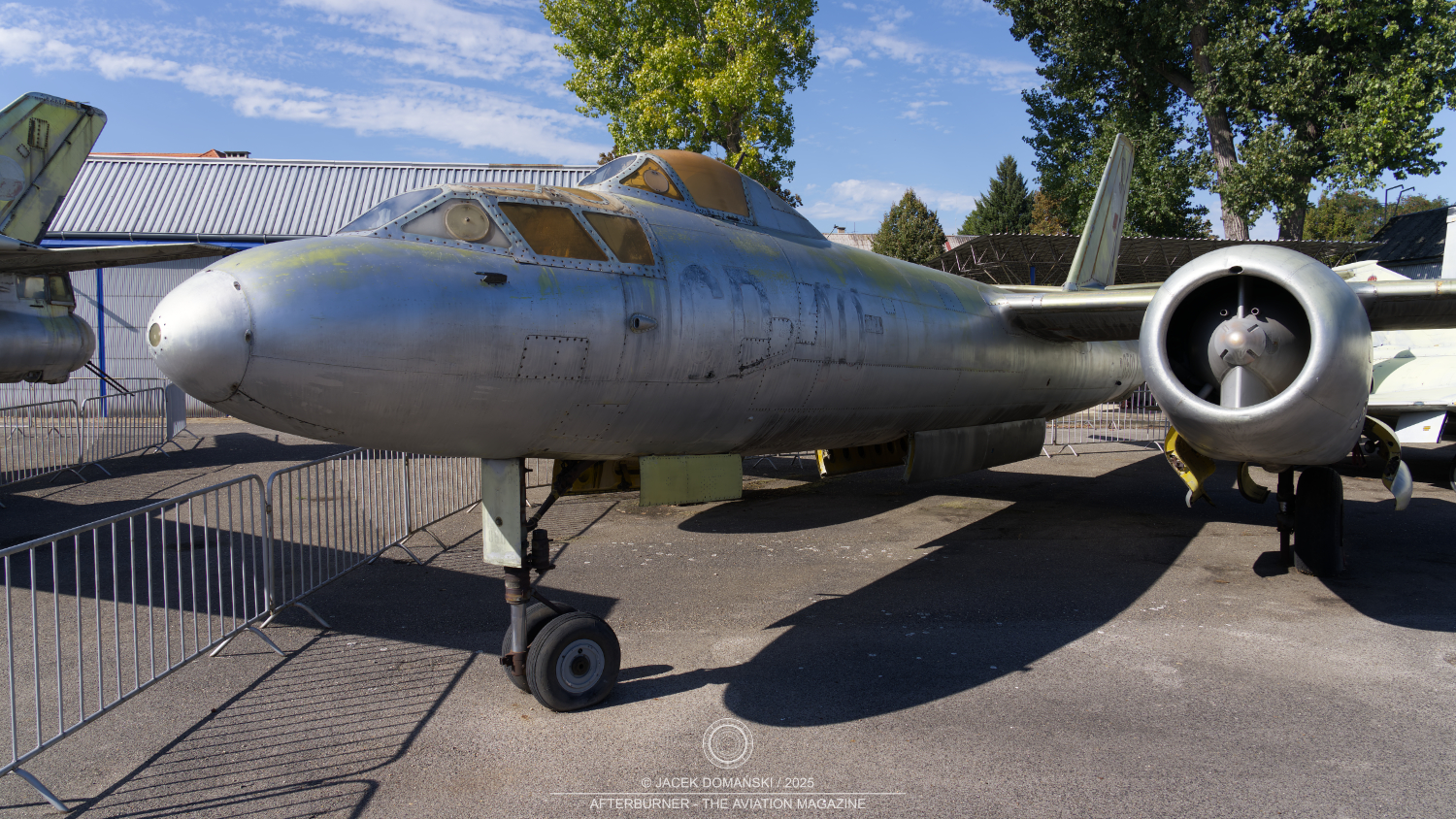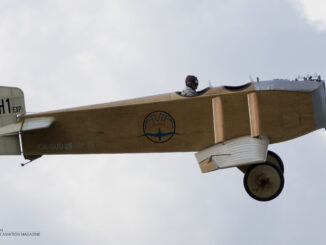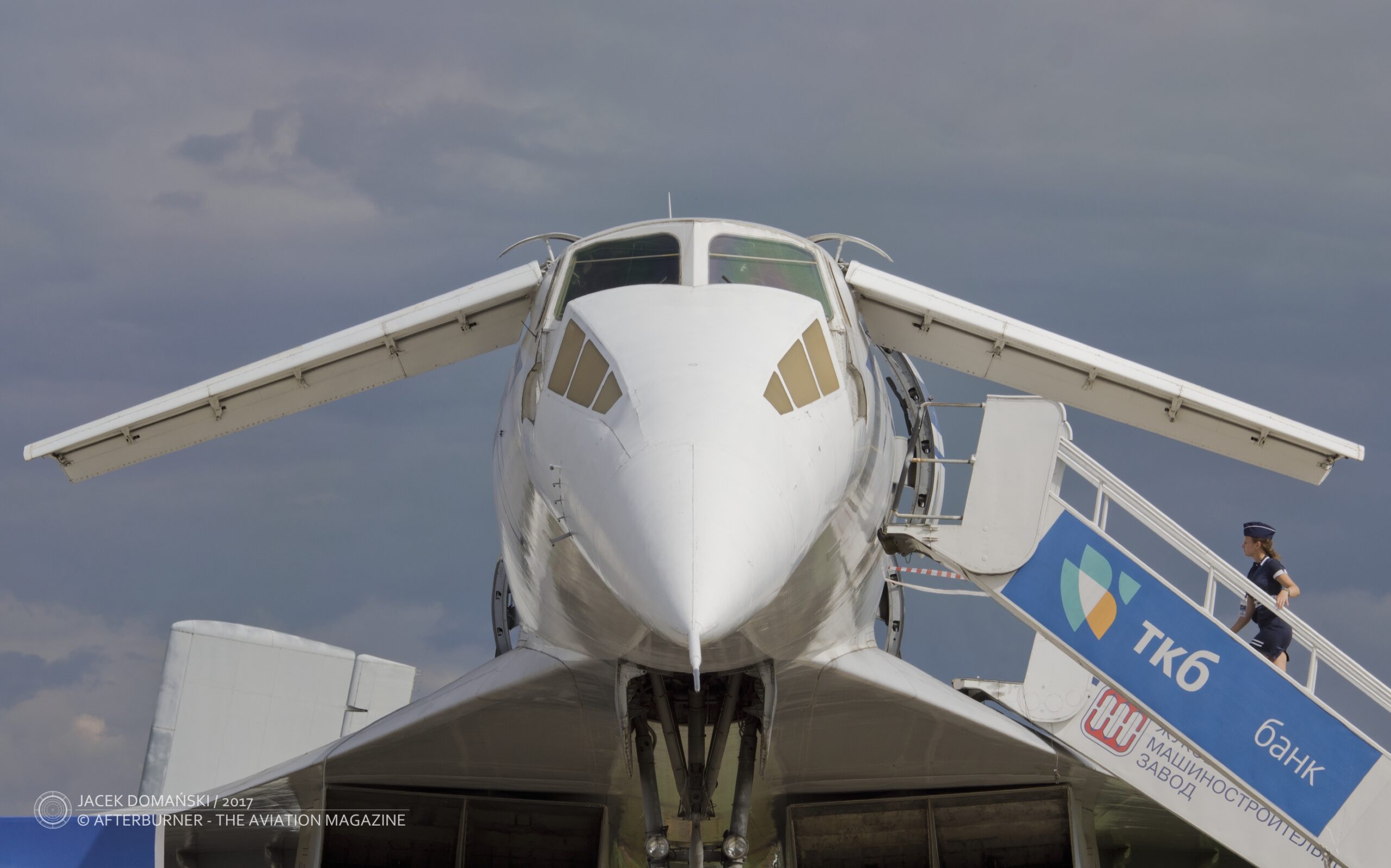 Ilyushin Il-28U (c/n 610501, formerly “CD-10”, later “0501”, of the Czechoslovak Air Force), exhibited at Letecké muzeum Kbely (Kbely Aviation Museum), Prague, September 2025.
Ilyushin Il-28U (c/n 610501, formerly “CD-10”, later “0501”, of the Czechoslovak Air Force), exhibited at Letecké muzeum Kbely (Kbely Aviation Museum), Prague, September 2025.
In June 1948, the Soviet authorities officially launched a development programme for a new twin-engine, jet-powered frontline bomber aircraft. The task of creating the new aeroplane was assigned to the OKB-240 and OKB-156 design bureaux, led by Ilyushin and Tupolev respectively.
Interestingly, the new Soviet bomber was to be powered by two Rolls-Royce RB.41 Nene jet engines. In 1946, the British government approved the sale of the Rolls-Royce powerplants to the Soviet Union and, according to official documents released in 2023, as many as fifty-five jet engines were delivered. In addition, a group of Soviet engineers was sent to the United Kingdom to undergo engine maintenance training at the Rolls-Royce plant.
According to Dr Steven Taylor¹, the Soviet government committed itself not to use the engine for military purposes. However, this promise was broken shortly afterwards and the Rolls-Royce powerplant was quickly copied in the Soviet Union through reverse engineering. The British engine was then manufactured by Klimov, designated as РД-45, РД-45Ф and ВК-1 (RD-45, RD-45F and VK-1), depending on the particular variant.
On 8 July 1948, the Ilyushin-designed bomber successfully performed its maiden flight. At that time, the aircraft was powered by two original, British-made Nene engines. Only in February of the following year, after the first series of evaluation flights, they were replaced with domestic copies.
The Tupolev variant of the bomber made its first flight only on 13 October 1949. The delay was caused by changes to the initial concept, which evolved from a three-engine aircraft powered by two Nenes and one RD-500 (the Soviet copy of the Rolls-Royce Derwent V) to a twinjet equipped with two VK-1 powerplants.
Nevertheless, the decision to approve Ilyushin’s design was made even before the Tupolev aircraft took off for the first time. Soon afterwards, mass production of the new Soviet jet bomber, now designated the Il-28 (NATO reporting name: Beagle), was launched at the Moscow, Voronezh and Omsk aviation plants. The Tupolev design was taken over by the Soviet Navy and, designated the Tu-14, was adopted for the role of a torpedo bomber.
The new jet bomber was unveiled to the public for the first time on 1 May 1950, when a formation of Il-28s participated in the traditional flypast over Moscow during the Victory Day parade.
The Il-28 featured the classic design of an early twin-engine combat jet, with engines housed in bulky nacelles mounted under the wings. The aircraft was operated by a crew of three, each crewmember having a separate, pressurised compartment: a glazed nose for the navigator/bombardier, a bubble canopy for the pilot, and a tail cabin for the rear gunner. Interestingly, only the pilot and navigator positions were equipped with ejection seats; the gunner had to use a floor hatch to bail out.
Within a short time, the Il-28 became the basic Soviet jet bomber and was widely exported around the world. More than 6,600 examples were built, including a licensed Chinese variant known as the Harbin H-5/B-5. The Il-28 was operated by approximately twenty-five air forces, including those of Afghanistan, Algeria, Cuba, Finland, Indonesia, Nigeria, Romania, Somalia and Vietnam, as well as most of the Warsaw Pact countries. Reportedly, the Il-28 still remains in active service with the Korean People’s Army Air Force.
The basic bomber was soon developed into a variety of specialised versions, including a long-range reconnaissance aircraft, a signals intelligence platform, a torpedo bomber, a nuclear-capable bomber, a target tug and target drone, an electronic countermeasure jammer, a high-speed mail aircraft and a meteorological aeroplane.
The unarmed training version, designated the Il-28U (NATO reporting name: Mascot), made its first flight in 1950. The aircraft was characterised by a new nose that accommodated the instructor’s seat.
In February 1955, the then Czechoslovak Air Force received its first three Il-28 aircraft, including one example of the training variant. Eventually, Czechoslovakia acquired fifty-seven bombers, seven trainers and ten Il-28R reconnaissance aircraft.
The aircraft were locally designated as B-228 (bombardovací – bomber) and CB-228 (cvičný bombardovací – training bomber). About a dozen aircraft were later converted into the Il-28RT/RTR electronic warfare version. The Czechoslovak Air Force retired the combat bombers in 1965, while the Il-28RT/RTR remained in active service until 1973.
1) https://www.telegraph.co.uk/news/2023/07/22/attlee-ignored-warnings-send-stalin-rolls-royce-engines



